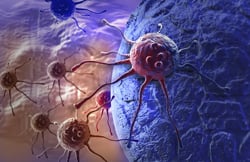There are at least three good reasons to learn about endocrine-disrupting chemicals (EDCs):
By interfering with our hormones, EDCs prevent our interconnected hormone systems from functioning normally. This creates health problems. In fact, the data linking some EDCs or entire classes of EDCs to chronic disease is comparable in strength and breadth to the evidence that links tobacco smoking with lung cancer.
You might know about chemicals such as lead, BPA, and DDT, all of which are EDCs. But did you know,
You might also have read about how the World Health Organization and the global scientific community are calling for reduced exposures to EDCs, or how the American Chemical Society is recommending safer alternatives.
In 2015, the Endocrine Society analyzed 1,800 studies on EDCs and published an evidence-based scientific statement. We found clear evidence showing how EDCs disrupt our hormones and harm our health. They are linked to male and female reproductive disorders, obesity, diabetes, neurological problems, immune and thyroid disorders, osteoporosis, Parkinson’s disease, and hormone-related cancers.
 The science is still catching up to the problem. We’ve learned about the effects of many EDCs, but how many others are there? How do they work together as mixtures? And what are their effects over time?
The science is still catching up to the problem. We’ve learned about the effects of many EDCs, but how many others are there? How do they work together as mixtures? And what are their effects over time?
Answering these questions requires further research and new approaches that take into account the interconnected nature of hormones, chemicals, and our world.
Meanwhile, you’ll have questions. Is that aluminum can bad for me? Should I throw out my children’s plastic baby bottles? Which products are EDC-free?
As EDC awareness, scrutiny, and media coverage increase around the world, remember that all conclusions should be grounded in scientific research that includes the expertise of scientists and clinicians who have detailed knowledge of hormone biology and endocrine systems – such as the people who comprise our rich membership. On the EDC topic page, you can continue to find research updates and news from the Endocrine Society.
 Studies show that even low doses of EDCs can cause harm humans and other biological systems. EDCs can stay in your body and cause cumulative effects over a lifetime. Some studies show that EDC effects can even be passed from parent to child (i.e., transgenerational).
Studies show that even low doses of EDCs can cause harm humans and other biological systems. EDCs can stay in your body and cause cumulative effects over a lifetime. Some studies show that EDC effects can even be passed from parent to child (i.e., transgenerational).
Yet unlike other harmful substances, such as tobacco or asbestos, very few US regulations exist for the manufacturing and use of EDCs. Industrial chemicals don’t have to be tested for endocrine-disrupting qualities before they go on the market. Only rarely are producers required to assess these specific safety concerns or provide that data to the federal government. Even when tested, there often limitations in the information we have available and current approaches to how the effects of EDCs are assessed.
In the European Union, policymakers are now considering how EDCs will be defined and what the criteria will be for listing a chemical as an EDC. Download, read, and share the Endocrine Society’s position on EDCs in the European Union.
Join the Endocrine Society in raising awareness of EDCs and the science behind them.

We rely on your voice to advocate for our policy priorities. Join us to show our strength as a community that cares about endocrinology. Contact your US representatives or European Members of Parliament through our online platform. Take action and make a difference today.